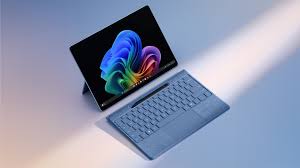Microsoft recently asserted that its Snapdragon X-powered Surface lineup surpasses Apple’s M3 MacBook Air in speed by over 50%, as confirmed in a briefing attended by The Verge. Additionally, battery tests were conducted to showcase the Surface’s efficiency. While Microsoft appears to lead in these aspects, Apple’s single-core dominance and longer tenure in the market add depth to this rivalry.
Microsoft’s Speed and Efficiency Claims
Speed Comparison
- According to Microsoft, the Snapdragon X-powered Surface devices exhibit remarkable speed, outpacing Apple’s M3 MacBook Air by more than 50%. This assertion was supported by data presented during a recent briefing.
Battery Efficiency Demonstrations
- Microsoft also showcased the battery efficiency of its Surface lineup, providing evidence of prolonged battery life compared to Apple’s M3 MacBook Air. These demonstrations aimed to highlight the practical advantages of choosing a Surface device.
Surface vs. MacBook Air: A Complex Rivalry
Surface’s Competitive Edge
- With superior speed and efficiency, Microsoft’s Surface devices offer compelling features for users seeking high performance and extended battery life. The Snapdragon X-powered technology contributes to these advantages.
Apple’s Single-Core Leadership
- Despite Microsoft’s advancements, Apple maintains its leadership in single-core performance, a critical factor for many users. The M3 MacBook Air’s optimization and Apple’s renowned chip design contribute to this superiority.
Market Experience
- Apple’s established presence in the market, coupled with its loyal user base, provides the company with a significant advantage over Microsoft. The MacBook Air’s reputation and longevity contribute to its continued success despite competition.
While Microsoft’s claims of surpassing Apple’s M3 MacBook Air in speed and efficiency are impressive, the rivalry between the Surface lineup and the MacBook Air extends beyond these metrics. Factors such as single-core performance and market experience play pivotal roles in shaping consumer preferences and driving competition in the tech industry.




